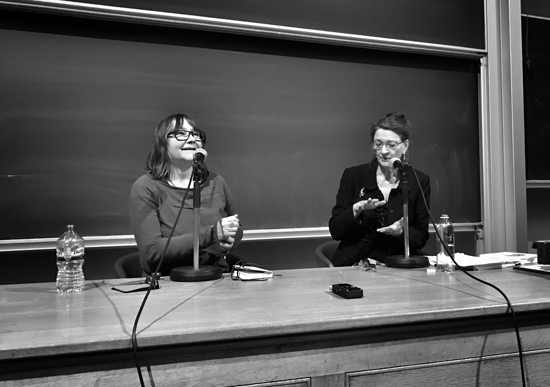The Longplayer Conversation 2016
The 2016 Longplayer Conversation, between Marina Warner and Ali Smith, took place on Wednesday 23rd November 2016 at the Anatomy Lecture Theatre, King’s College, London WC2.

Ali Smith was born in Inverness in 1962 and lives in Cambridge. She is a writer of novels, short stories, plays, and criticism. Her novel, How To Be Both, was shortlisted for the 2014 Man Booker Prize and the Folio Prize and won the Bailey’s Women’s Prize for Fiction, Goldsmiths Prize, and the Costa Novel Award. Her story collection Public Library and Other Stories was released in November 2015, while her new novel, Autumn, was published by Penguin Hamish Hamilton in October.
Marina Warner DBE, FBA, is Professor of English and Creative Writing at Birkbeck College, and a Professorial Research Fellow, SOAS. Her books include Alone of All Her Sex: The Myth and the Cult of the Virgin Mary (1976), and Monuments & Maidens: The Allegory of the Female Form (1988). In 1994 she gave the BBC Reith Lectures on the theme of Six Myths of Our Time. Her study of the Thousand and One Nights, Stranger Magic: Charmed States and The Arabian Nights (2011) was awarded a Sheykh Zayed Prize in 2012, a National Book Critics Circle Award and the Truman Capote Prize. She has curated exhibitions, including The Inner Eye (1996), Metamorphing (2002-3), and Only Make-Believe: Ways of Playing (2005). She was awarded the Holberg Prize in the Arts and Humanities in 2015. She is currently working on the theme of Sanctuary and culture in times of dislocation and diaspora, as well as on a memoir-novel about her childhood in Egypt.

